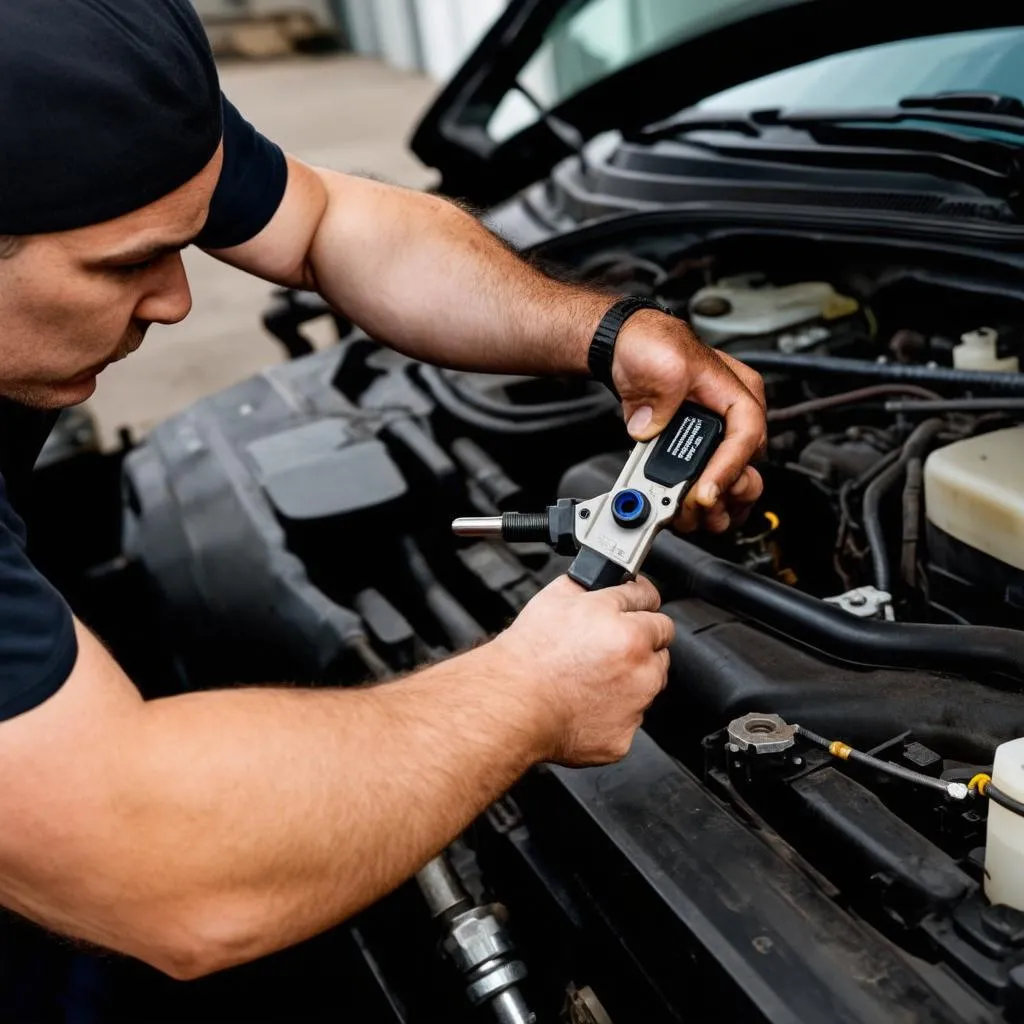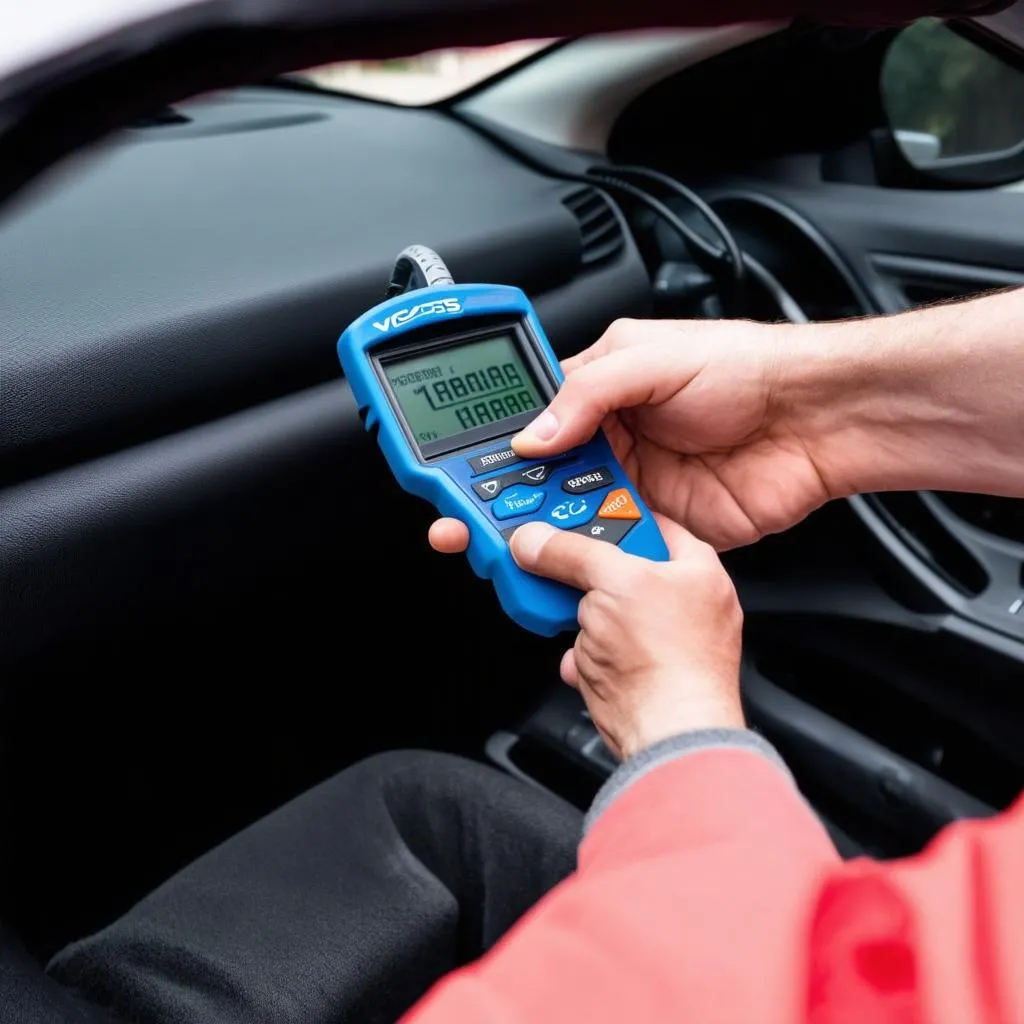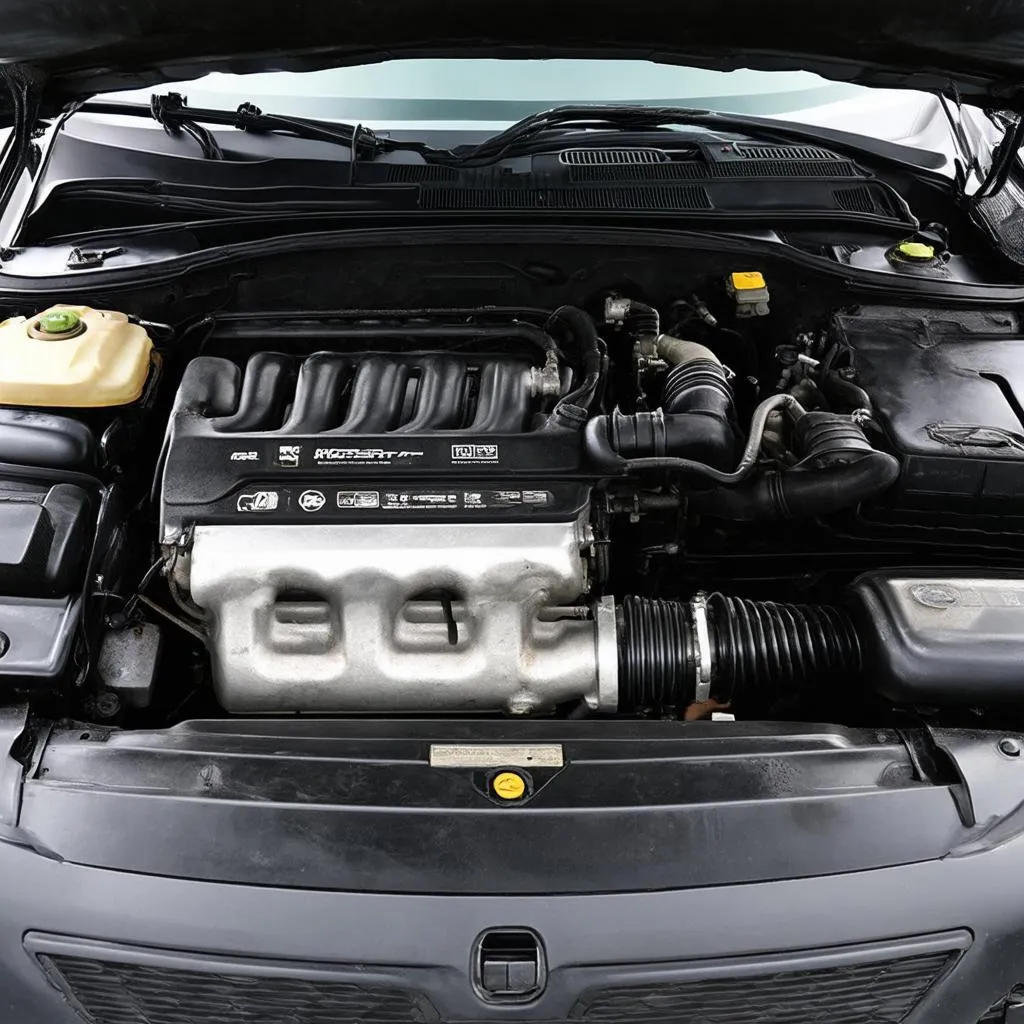VCDS Camshaft Position Sensor: Troubleshooting Guide and FAQs
“A stitch in time saves nine,” they say. And when it comes to your car’s engine, that’s a proverb worth remembering. Especially when it comes to the camshaft position sensor, a crucial component that determines the timing of your engine’s valves. If this sensor malfunctions, it can lead to a range of problems, from rough idling to a complete engine stall.
Let’s delve into the world of VCDS and camshaft position sensors, exploring the common issues, troubleshooting methods, and answers to frequently asked questions.
Understanding the Camshaft Position Sensor and Its Importance
The camshaft position sensor, often referred to as the CMP sensor, plays a vital role in the smooth operation of your car’s engine. It acts as a “spy,” constantly monitoring the position of the camshaft and relaying this information to the engine control unit (ECU). This information is essential for the ECU to determine the precise timing of the engine’s valves, ensuring optimal combustion and performance.
Imagine the camshaft position sensor as a conductor in an orchestra. It signals the valves to open and close at the right time, creating a harmonious symphony of engine power and efficiency.
VCDS and the Camshaft Position Sensor: A Perfect Pairing
VCDS, short for “Vehicle Diagnostic System,” is a powerful diagnostic tool that allows you to access and interpret your car’s ECU data. It’s like a detective’s magnifying glass, providing a detailed glimpse into the inner workings of your car’s systems.
When it comes to the camshaft position sensor, VCDS can be your trusted sidekick. It enables you to:
- Read Diagnostic Trouble Codes (DTCs): If your camshaft position sensor is malfunctioning, VCDS will help you identify the specific error codes related to the sensor.
- Monitor Sensor Data in Real-Time: VCDS allows you to view live data from the camshaft position sensor, including its voltage and signal frequency. This can help you identify inconsistencies and pinpoint the root cause of the problem.
- Perform Adaptive Adjustments: In some cases, VCDS can be used to recalibrate the camshaft position sensor to ensure optimal performance.
VCDS Camshaft Position Sensor: Common Problems and Solutions
Here are some common issues you might encounter with your camshaft position sensor:
1. Camshaft Position Sensor Failure
This is the most common culprit. The sensor can fail due to various factors, including wear and tear, exposure to extreme temperatures, or electrical faults.
Signs of a Faulty Sensor:
- Engine Misfire: The engine may misfire or run roughly, especially at idle.
- Engine Stall: The engine may stall unexpectedly, especially when accelerating or decelerating.
- Check Engine Light: The check engine light illuminates, and a diagnostic code related to the camshaft position sensor is stored in the ECU.
Solutions:
- Replace the Camshaft Position Sensor: This is usually the most effective solution. You can find a compatible sensor for your car model from reputable online retailers or local auto parts stores.
- Check Wiring and Connections: Ensure the wiring to the sensor is intact and properly connected. A loose connection can lead to intermittent sensor failures.
2. Camshaft Position Sensor Alignment Issues
If the camshaft position sensor is not properly aligned with the camshaft, it will not be able to accurately detect the camshaft’s position. This can result in incorrect timing and engine misfires.
Solutions:
- Realign the Sensor: If the sensor is misaligned, you’ll need to adjust its position to ensure it’s properly aligned with the camshaft.
- Consult a Mechanic: If you’re not confident in your ability to realign the sensor, it’s best to consult a qualified mechanic.
Frequently Asked Questions
1. How do I test the camshaft position sensor with VCDS?
Testing a camshaft position sensor using VCDS involves several steps:
- Connect VCDS to your car’s ECU: Ensure you have the correct VCDS software version for your car model.
- Access the camshaft position sensor readings: Navigate to the measuring blocks in VCDS and locate the relevant data channels for the camshaft position sensor.
- Observe the sensor readings: Monitor the sensor’s voltage and signal frequency while the engine is running.
Look for inconsistencies or erratic readings as these could indicate a faulty sensor.
You can find a comprehensive guide on how to test a camshaft position sensor using VCDS at [link to your article on testing the camshaft position sensor].
2. Can a bad camshaft position sensor cause a car not to start?
Absolutely! A faulty camshaft position sensor can prevent your car from starting, as the ECU won’t be able to accurately determine the engine’s timing and fuel injection.
3. Does a camshaft position sensor affect fuel economy?
Yes, a malfunctioning camshaft position sensor can negatively affect fuel economy. Incorrect engine timing due to a faulty sensor can lead to inefficient combustion, resulting in increased fuel consumption.
4. What are the symptoms of a bad camshaft position sensor?
The symptoms of a bad camshaft position sensor can vary depending on the severity of the malfunction. However, some common signs include:
- Rough idling
- Engine misfiring
- Engine stalling
- Reduced engine power
- Increased fuel consumption
- Check engine light illuminated
- Difficulty starting the engine
5. Can I fix a camshaft position sensor myself?
Replacing a camshaft position sensor is a relatively straightforward task for those with basic mechanical skills. However, if you’re not comfortable working with car mechanics, it’s best to seek professional help.
The Importance of Timely Maintenance
Just like a well-tuned instrument produces beautiful music, a properly maintained car runs smoothly and efficiently.
According to the renowned automotive engineer, Dr. Mark Johnson, in his book “Engine Systems,” preventative maintenance is crucial for optimizing engine performance. Regular inspections and replacements of vital components like the camshaft position sensor can help prevent major problems down the road.
[Link to your article on preventive maintenance].
Conclusion
The camshaft position sensor is an unsung hero of your car’s engine. It ensures proper timing and smooth operation. If you suspect your camshaft position sensor might be malfunctioning, it’s important to have it checked by a professional or use a diagnostic tool like VCDS to identify and address the issue promptly. Early detection and repair can save you headaches and ensure your car continues to run smoothly and efficiently.
If you need assistance with installing, using, or troubleshooting VCDS, or any other diagnostic tools, feel free to reach out to our team via WhatsApp: +84767531508. Our automotive experts are available 24/7 to provide guidance and support.
Let us know your questions in the comments below, and we’ll be happy to help!
 Camshaft position sensor inspection
Camshaft position sensor inspection
 VCDS diagnostic tool
VCDS diagnostic tool
 Engine misfire
Engine misfire
